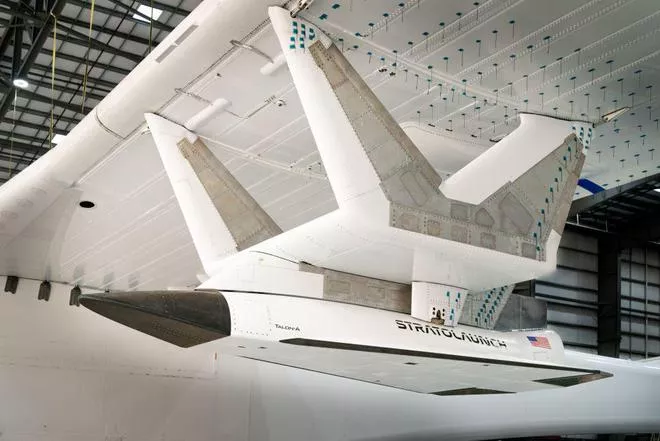On May 31, stratolaunch, a U.S. aviation startup, recently announced that it has completed the test version of the hypersonic aircraft talon-a in general, and will conduct high-altitude flight tests with the company's ROC aircraft. It is reported that stratolaunch just completed the fifth flight of ROC, the largest aircraft in history, on May 4, and verified the aircraft landing gear and other devices. The company plans to lift the test version ta-0 of the talon-a hypersonic vehicle carried by ROC into the air and release it to evaluate the performance of the whole system.
Stratolaunch said: "after completing the separation test of ta-0, the company will test the first hypersonic aircraft Ta-1 in the next step." The company representative added: "the team has begun to manufacture the third test vehicle Ta-2, which is the first fully reusable hypersonic test vehicle."
The representative of the company disclosed that stratolaunch initially planned to have ROC aircraft carry talon-a for the first release test in early 2022, but now it may carry out a comprehensive test in the middle and late 2023.

On May 26, stratolaunch added that ta-0 would take ROC for a flight later this year to verify how the aircraft would affect the flight dynamics of ROC aircraft. The release test will be conducted one day in the future. Since ta-0 is not equipped with an engine, it is mainly used to test the flight dynamics of the aircraft in the process of falling.
Stratolaunch initially envisioned the 117 meter ROC as a platform for launching satellites in the air. Paul Allen, the co-founder of Microsoft, founded the company in 2011 and conducted the first test flight of ROC aircraft in april2019.
Since Allen died before the first test flight of the aircraft, in October 2019, a group of new owners acquired stratolaunch. Subsequently, they introduced a new design to launch hypersonic vehicles into the air. The speed of such vehicles is at least five times the speed of sound, and has recently become the focus of many U.S. military programs.
For example, in early May this year, the "glider Destroyer" hypersonic missile interceptor project of the US Defense Advanced Research Projects Agency (DARPA) announced the second phase of the project. At that time, the agency said, "wind tunnel and flight tests on jet interaction effects".
The agency recently announced that Lockheed Martin's hypersonic missile prototype can fly at five times the speed of sound "in a long period of time", which is part of the hypersonic inspiratory weapon concept (hawc) project. Raytheon technologies also completed its own hawc project test in September 2021.
ROC just completed its last flight on May 4. Following the completion of the third and fourth test flights at the same location in early 2022, the ROC aircraft completed its fifth test at Mojave Aerospace port on May 4. Stratolaunch said that the talon-a hypersonic aircraft will use the pylon that was first carried in the fifth test flight.
Stratolaunch said that the 3600 kg pylon also has a winch, "which will load the talon-a aircraft from the ground to the platform, speed up the launch preparation and reduce the demand for ground support."
The company also added that it hoped that this hypersonic test project would achieve achievements such as technology development, scientific research or demonstration of key components working at high speed. (Chenchen)